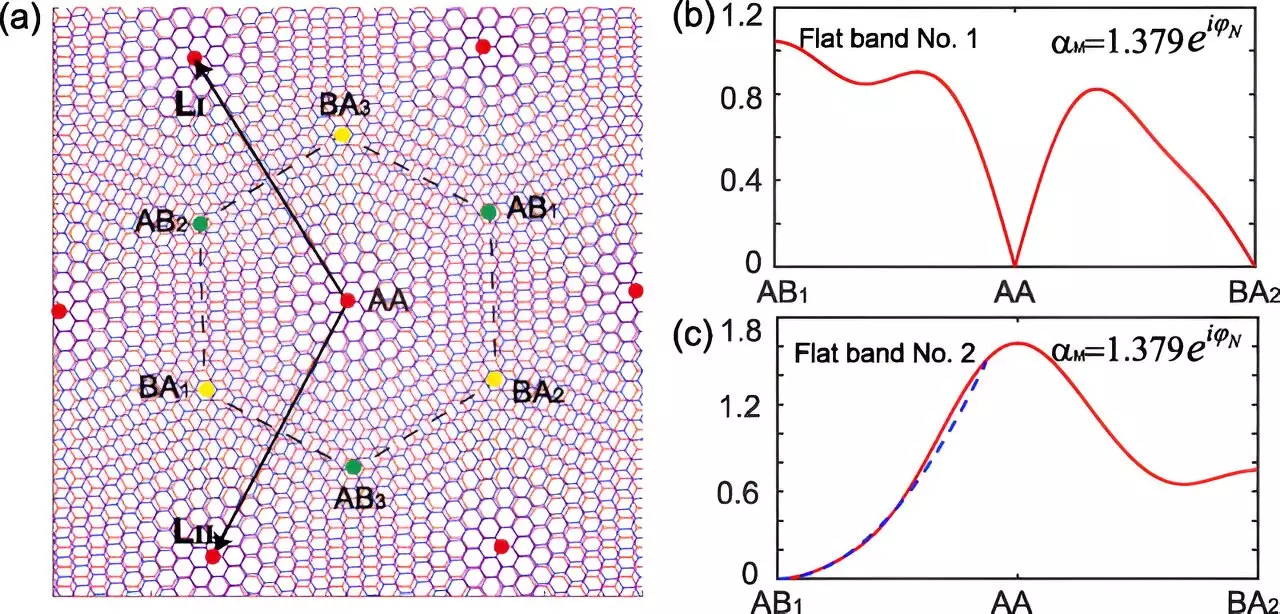Graphene, a single layer of carbon atoms in a hexagonal lattice, has gained recognition for its unique electronic properties that allow for the development of electronic devices beyond traditional silicon-based technology. Fusing two or more layers of graphene together creates a phenomenon known as the moiré pattern, leading to significant changes in properties such as correlated insulator behavior and superconductivity. However, recent research conducted by RIKEN physicists has revealed that introducing a spatially varying magnetic field to twisted bilayer graphene can further enhance its exotic physics playground.
One of the remarkable features of graphene is its linear relationship between an electron’s energy and momentum, resulting in exceptional electronic properties. When two layers of graphene are twisted at specific angles, the band structure evolves into flat bands due to adjusted interlayer coupling. In these flat bands, the kinetic energy of electrons is minimized, amplifying electron-electron interactions and giving rise to strongly correlated electronic phenomena like unconventional superconductivity. The discovery of such phenomena in magic-angle twisted bilayer graphene has sparked both astonishment and excitement within the physics community.
The study conducted by Ching-Kai Chiu, Congcong Le, and their team at RIKEN iTHEMS has unveiled the potential of introducing a spatially alternating magnetic field to twisted bilayer graphene. This addition results in the emergence of additional magic angles and flat bands that are quadruply degenerate, offering greater complexity and the possibility of even more correlated phenomena. The introduction of a magnetic phase provides a new degree of freedom to manipulate the electronic band structure, opening up avenues for exploring novel electronic behaviors.
The search for materials that exhibit flat bands and correlated electronic phenomena is ongoing, with a focus on identifying new platforms that can host such intriguing physics. The systematic exploration for materials with flat bands holds promise for uncovering new exotic properties and expanding our understanding of quantum physics. By continuing to investigate the influence of magnetic fields on twisted graphene layers, researchers aim to unlock the full potential of these materials for future technological advancements.
The integration of magnetic fields into twisted bilayer graphene offers a rich playground for exploring exotic physics and unveiling novel electronic behaviors. The enhanced degeneracy and manipulation of electronic band structures through magnetic phases present exciting opportunities for discovering new correlated phenomena. As research in this field progresses, the potential for developing innovative electronic devices with unprecedented functionalities continues to expand.


Leave a Reply
You must be logged in to post a comment.